2022 Hyundai Santa Cruz Review: First Drive

FAST FACTS
| Engine: | 2.5L I4 Turbo |
| Output: | 281 hp, 311 lb-ft |
| Transmission: | 8DCT, AWD |
| US fuel economy (MPG): | 19/27/22 |
| CAN fuel economy (L/100KM): | 12.1/8.6/10.6 |
| Starting Price (USD): | $25,175 (inc. dest.) |
| As-Tested Price (USD): | $40,905 (inc. dest.) |
| Starting Price (CAD): | $40,424 (inc. dest.) |
| As-Tested Price (CAD): | $46,724 (inc. dest.) |
Hyundai doesn’t want you to use the T-word.
The 2022 Hyundai Santa Cruz might look like a truck. It will haul things like a truck, and tow like a truck, too. Smaller amounts than other trucks, in both cases, but haul and tow nonetheless. It’s not a truck though, according to the Korean automaker.
Get a Quote on a New Hyundai Santa CruzInstead, Hyundai insists on calling the Santa Cruz a Sport Adventure Vehicle, a… vehicle-with-bed to complement the excellent Tucson compact crossover. It’s a move we’ve seen elsewhere: Kia calls its latest minivan a Life Utility Vehicle, and BMW also uses SAV (“Sport Activity Vehicle” here) for its crossovers.
Is this more marketing-led madness? I spent two days criss-crossing southern Ontario in Hyundai’s latest to see if it’s truly a segment-buster—and more importantly, if it’s any good.
What’s new?
From the B-pillar forward, the Santa Cruz bears a striking resemblance to the latest Tucson crossover. That’s to be expected, as both share the same unibody platform. It isn’t a straight copy-paste design job, though: the ‘Cruz has a different grille treatment, unique lighting signature, and a more rugged bumper design. Move around to the side and the Tucson’s complicated surfacing is gone, with a simple arrowhead character line running along the tops of the doors. Round wheel arches feature little tabs right at their tops, with a little line drawing of the truck. Buyers can pop these off and find a handy GoPro mount underneath, though I didn’t try that for myself during the test.
SEE ALSO: 2022 Ford Maverick Hands-On Preview: 5 Reasons Ford’s Small Pickup is a Big DealFrom the rear doors back, the Santa Cruz is of course very different from the Tucson, and indeed any other Hyundai sold on these shores. An angled C-pillar leads into a small bed, with a standard (in Canada), locking tonneau cover. The tailgate may just be the best part of the design to these eyes, eschewing the oh-so-common vertical taillights for funky, sideways T-shapes. Even the styling is hinting at The Word That Can’t Be Named.
Like the Honda Ridgeline and upcoming Ford Maverick, the Santa Cruz uses a front-drive platform. AWD is optional in America, and standard in Canada. The latter sticks to a single engine, too: Hyundai’s stout 2.5-liter turbocharged engine, sending 281 horsepower and 311 pound-feet of torque through an eight-speed dual-clutch transmission. The base engine is another 2.5-liter, without a turbo, with outputs of 191 hp and 181 lb-ft. It hooks up to an eight-speed automatic.
Doing truck things
(There’s that word again.)
Let’s talk about that bed. A little over four feet long at its shortest point (48.4 inches from the top to the tailgate, 52.1 inches from the bottom), it has a few clever features for the weekend adventurer. The power-actuated tailgate is height adjustable, so the Santa Cruz can hold 4×8 plywood sheets, at least on an angle and strapped in. There’s also a sizeable underfloor trunk near the tailgate, capable of holding multiple full backpacks. It’s fully hoseable, too. Bed tie-downs and rails are both standard, and the bed itself includes molded pockets for owners to create a shelf using 2x4s.
SEE ALSO: 2022 Hyundai Tucson Hybrid Review: Stylin’ On YouThe factory-built tonneau cover—a first of its kind, according to Hyundai—easily retracts with a quick pull of its handle. A pull-strap allows owners to bring it back their way without having to move around to the side of the bed. Meanwhile, a simple yellow switch on the underside of the cover can lock it. I picked up the Santa Cruz right as the first crack of thunder announced an incoming storm; after a few hours of driving, all my bed-stored gear was still completely dry.
Hyundai rates the Santa Cruz to a maximum 5,000-pound towing capacity when equipped with the turbocharged engine (front-drive models are capped at 3,500 lb). You won’t find that sort of number in the compact crossover segment, nor with the Maverick. Even the next-size-up Ridgeline posts the same towing rating. With a trailer hooked up, carrying a jet ski provided by Kawasaki Canada, the Santa Cruz wasn’t going to trouble that max rating. It never felt cumbersome either, ably tackling the many hills of the area. Trailer sway control is standard, too.
Pulling into the parking lot for the hotel from Schitt’s Creek, the Santa Cruz’ relatively smaller size and turning circle makes the whole shebang that much easier to turn around, too.
Crossover ride
If you’re a crossover owner looking to make the jump to a vehicle with a bed, good news: the Santa Cruz makes the transition as painless as possible. On more than a few occasions during my drive, I had to remind myself I wasn’t in a Tucson. (A look in the rearview tends to help. – Ed.)
SEE ALSO: 2021 Ford Ranger Raptor, Sorry, Tremor ReviewNo doubt helping the situation is how similar the surroundings are in the Santa Cruz. From the driver’s seat, the interior is essentially identical. The dual-level, wraparound design of the dashboard provides a good feeling of space, and the material quality is great. The central section flows down into the available 10.25-inch infotainment screen. A traditional PRND stalk sprouts out of the center console, instead of the push-button affair from higher Tucson trims. The only other visual change is a collection of orange stripes above the glovebox. Front-row comfort is high, with plenty of space and a supportive, power-adjustable driver’s seat. Passengers must make do with manual controls, however.
The second row is fine for adults, though maybe not three-abreast. It’s dark back there, with a high window line and regular-sized moonroof limiting natural light, but there’s a solid 36.5 inches (926 mm) of legroom. Headroom is also healthy, at 40.1 inches (1,018 mm). Thankfully, the seatbacks aren’t bolt-upright, so while the cushions are flatter than the equivalent Tucson’s, the Santa Cruz back row feels like a fine place for longer trips. The bottoms will also tip up to reveal small storage cubbies.
Reinforcing the crossover vibes is how smooth the ride is. On the rolling hills around Hockley Valley, Ontario, the Santa Cruz has a pliant, easy-going sort of attitude. Mid-corner bumps don’t upset it, and wind noise stays at wholly acceptable levels. The steering is light, because of course it is, but the wheel is direct and accurate. The 2.5-liter turbo is as good here as it is everywhere else in the Hyundai empire: supremely torquey barely past idle, it hauls the Santa Cruz up to passing speeds with authority thanks to quick shifts from the DCT. The brake pedal has an almost German feel to it, with sharp initial bite and strong stopping power.
The EPA rates the turbocharged Santa Cruz at 22 mpg combined, with 19 mpg city and 27 mpg highway. The base engine scores a single mpg more combined, and worse on the highway—likely because it has to work harder. Canadian figures are 10.6 L/100 km combined, split between 12.1 city and 8.6 L highway. During my drive on nearly-empty country roads, the Santa Cruz dipped under that highway figure unencumbered, and rose up to essentially match it when pulling the jet ski. When asked about adding the Tucson’s hybrid drivetrain to the mix, a Hyundai spokesperson only said that the company is monitoring the market.
SEE ALSO: Hyundai Palisade vs Kia Telluride ComparisonDigital footprint
This top-level tester (Limited in the US, Ultimate in Canada) comes with a comprehensive suite of tech and driver assists. Hyundai’s latest infotainment is generally good, with clear graphics and snappy responses. I’d prefer traditional buttons to the haptic ones underneath the screen however, and the lack of a home button is frustrating. Same goes with the Hyundai group’s resistance to USB-C, for that matter. Apple CarPlay and Android Auto are both standard, and there’s an available wireless charger. The instrument panel is digital too, and despite the lack of a cowl, resists glare well.
Standard driver assists in the US include forward collision avoidance with pedestrian detection, plus lane-keep assist, lane-departure warning, driver attention alert, and auto high-beams. Move up one trim and blind-spot monitoring plus rear cross-traffic alert join the lineup. In Canada, all the afore-mentioned assists are included from the get-go, since the Santa Cruz lineup starts at a much higher price point there. Optional equipment in both markets include a 360-degree camera, adaptive cruise control, and Hyundai’s excellent Highway Drive Assist.
Who’s the competition?
There’s one major competitor every potential Santa Cruz buyer will be cross-shopping: the 2022 Ford Maverick. The Blue Oval’s upcoming baby truck is a few inches longer, most of which goes into the bed. Perhaps more important is its ultra-low $21,490 ($27,850 CAD) starting price, including destination. That will net buyers a standard hybrid drivetrain powering the front wheels, along with a 2,000-pound towing limit. Checking the EcoBoost AWD option doubles the towing limit and raises the price to at least $24,795 ($30,495 CAD) in XL trim. Meanwhile, getting turbo power in the Santa Cruz requires at least $36,865 in America. The Canadian lineup only uses the 2.5T, and thus starts at $40,424 CAD.
SEE ALSO: Toyota RAV4 vs Nissan Rogue ComparisonAny way you slice it, that’s a big gap. AutoGuide hasn’t been able to drive the Maverick yet, but I did thoroughly poke around a pre-production unit last month. While close in all physical dimensions, the Ford has an entirely different feel inside. It’s a back-to-basics, straight-forward truck, even in zhuzhed-up Lariat trim. Check every option except the FX4 Off-Road and First Edition packages and the Maverick Lariat will run up to $36,355 ($43,110 CAD). The gap closes, though the as-tested sticker of this particular ‘Cruz was still $40,905 ($46,724 CAD).
The Honda Ridgeline is the other unibody truck option. It’s a proper mid-sizer though, coming in around a foot longer than the Santa Cruz.
On the crossover side, naturally the excellent new Tucson is an option. It doesn’t come with the peppy turbocharged engine here, but does offer a great, fuel-sipping hybrid alternative. Other strong, traditional compact crossover choices include the Nissan Rogue, Toyota RAV4, Honda CR-V, and Mazda CX-5.
Final thoughts: 2022 Hyundai Santa Cruz First Drive Review
It took two days to know for sure, but I finally got a bead on the 2022 Hyundai Santa Cruz: it really is the second coming of the Subaru Baja. I’m serious.
Back in the early 2000s, Subaru was a mainstream maker with a bit of a weird streak. Here in 2021, that sounds like Hyundai: what other company builds an asymmetrical hot hatch, a hydrogen fuel-cell vehicle, and a crossover-based pickup? Weird is good; weird should be celebrated, as it pushes us out of our comfort zones. Just as the first compact crossovers appeared to plug the gap between cars and old-school SUVs, the Santa Cruz does the same thing for crossovers and pickups. With tastes shifting towards those two segments over the last 20 years, the Santa Cruz looks primed to succeed where its spiritual successor did not. This is a well-equipped, smooth-riding machine, with all the refinement of a Tucson plus the added usability of a bed.
I’m still not calling it an SAV, though.
Become an AutoGuide insider. Get the latest from the automotive world first by subscribing to our newsletter here.
LOVE IT
- It looks cool as hell
- Rides like a regular crossover
- Can still do truck (!) things
LEAVE IT
- Sacrifices second-row comfort
- Can't escape comparisons to mid-size trucks
- Why no infotainment home button, Hyundai?

Kyle began his automotive obsession before he even started school, courtesy of a remote control Porsche and various LEGO sets. He later studied advertising and graphic design at Humber College, which led him to writing about cars (both real and digital). He is now a proud member of the Automobile Journalists Association of Canada (AJAC), where he was the Journalist of the Year runner-up for 2021.
More by Kyle Patrick



























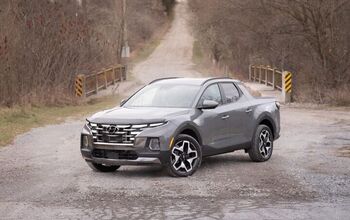

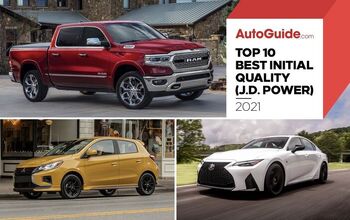

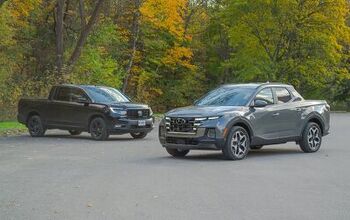
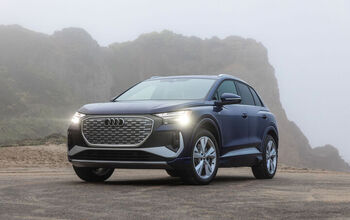

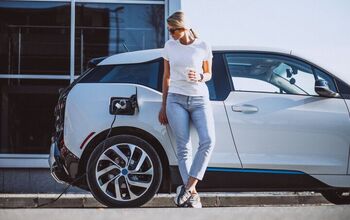


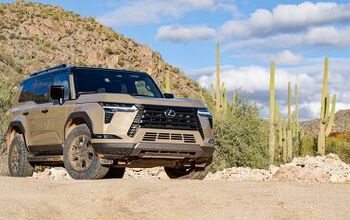
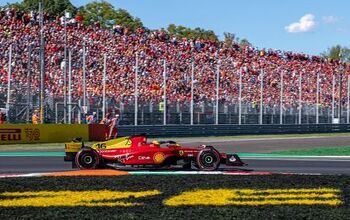
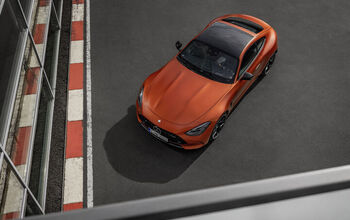


Comments
Join the conversation